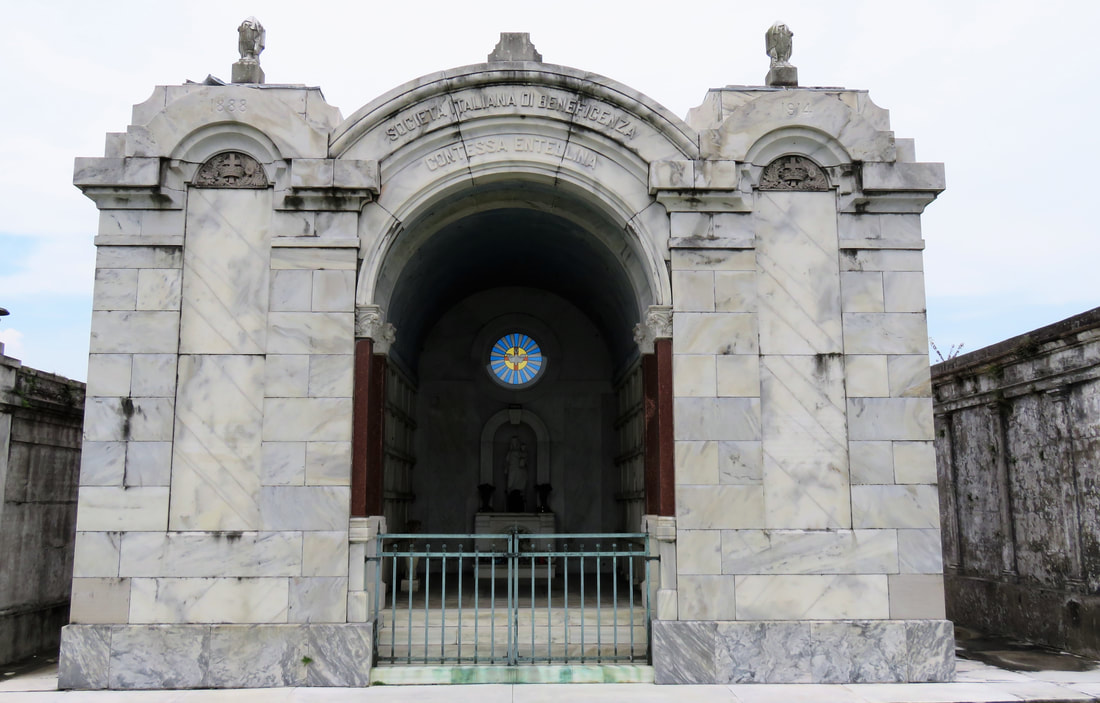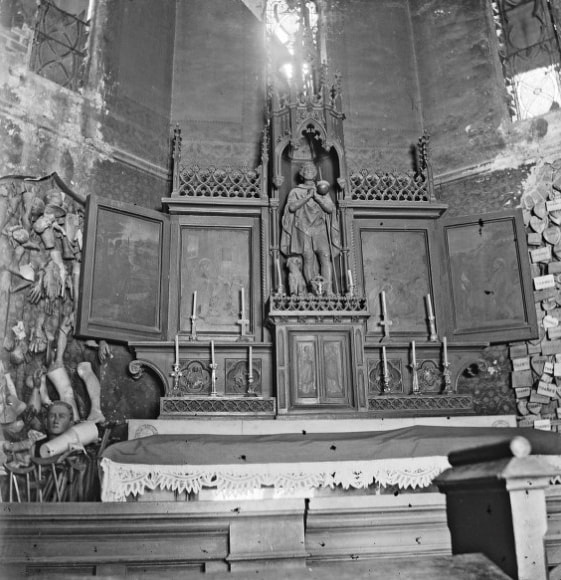|
Today is All Saints’ Day! In New Orleans, the holiday is spent decorating the graves of loved ones in cemeteries. For some, small repairs and cleaning will be undertaken. Others will bring their children and picnic beside family tombs. Because New Orleans All Saints’ Day tradition is as old as the city itself, we like to reminisce on All Saints’ Days of yesteryear. We’ve looked at All Saints’ Day 1853, 1865, 1878, 1918, and 1945 in the past. This year, we’re time-travelling exactly one century, to November 1, 1917. The text below is from the New Orleans Times-Picayune, November 2, 1917. Some of the text is improperly microfilmed and thus illegible, but we find the reflections of the day to be compelling nonetheless: GRAVES OF DEAD FLOWER COVERED ALL SAINTS’ DAY Cemeteries Thronged with Relatives and Friends of Loved Ones Departed On certain occasions the Latin character of New Orleans comes to the foreground with particular clarity, and vivid examples are given of the French, Spanish, and Roman love of ceremony and custom. The Anglo-Saxon element seems also to have caught the [illeg] by association of culture, for the entire city appeared to have come out for the Feast of All Saints and to pay tribute to the brevity of the world. And it was done in New Orleans own individual way.
At the gates of Metairie, Greenwood, St. Patrick’s and the Masonic Cemetery sat nuns accompanied by children in the dull blue uniform of asylums who rattled a few coins in tin plates as a reminder of a more pressing duty to the dead than bringing flowers, and repeated in sing-song the plaintive plea: “Help the orphans, mister.” Around some tombs whole families seemed to have congregated for the day; there were chairs and lunch baskets and pillows for the younger members to take siestas during the afternoon. With balloon men, peanut men, vendors of flags, soft drinks and popcorn a most festive atmosphere prevailed among the stream of automobiles that passed continually. Truck loads of picknickers were frequent. Registration booths for the signing of the food pledge had been opened at the larger cemeteries and zealous officials hailed every woman who entered with the query: “Have you signed?” They were met with a variety of replies. Many only smiled and nodded, but occasionally a haughty lady would toss her head in scorn and come back with: “No, and I don’t intend to!” or some mother, harassed by a flock of wailing offspring would answer with a flood of Italian that lost none of its fire by being unintelligible. St. Roch’s Cemetery has a quaint charm all its own on All Saints. The tombs are different, the decorations of shells and wax flowers and embroidered mottoes are different, and there is nothing else in the world quite like the tiny chapel with the crutches, canes and artificial arms and legs laid around the altar as a thank offering to good St. Roch, the healer of infirmities. Special tables are erected for the occasion to hold the candles of those who have made a wish for the saint to fulfill during the next twelve months.
0 Comments
Leave a Reply. |
About the Author:Emily Ford owns and operates Oak and Laurel Cemetery Preservation, LLC. Archives
November 2019
Categories
All
|
- About
-
Restoration
- Services
-
Portfolio
>
- Turning Angel Statue, Natchez, MS
- Ledger Monument, Baton Rouge, LA
- Pyramid Statuary, New Orleans, LA
- Bronze and Granite Monument, Carville, LA
- Box Tomb, New Orleans, LA
- Vernacular Concrete Monument, Pensacola, FL
- 1830s Family Tomb, Covington, LA
- 1850s Family Tomb, New Orleans, LA
- 1880s Family Tomb, New Orleans, LA
- Headstone and Monument Restorations, Pensacola, FL
- Society Tomb, New Orleans, LA
- Education
- Blog
- Contact
|
Oak and Laurel Cemetery Preservation, LLC is a preservation contractor in New Orleans, Louisiana, specializing in historic cemeteries, stone conservation, educational workshops and lectures. Oak and Laurel serves the region of the Southeastern US.
|
QUICK LINKS |
CONNECT |
Proudly powered by Weebly










